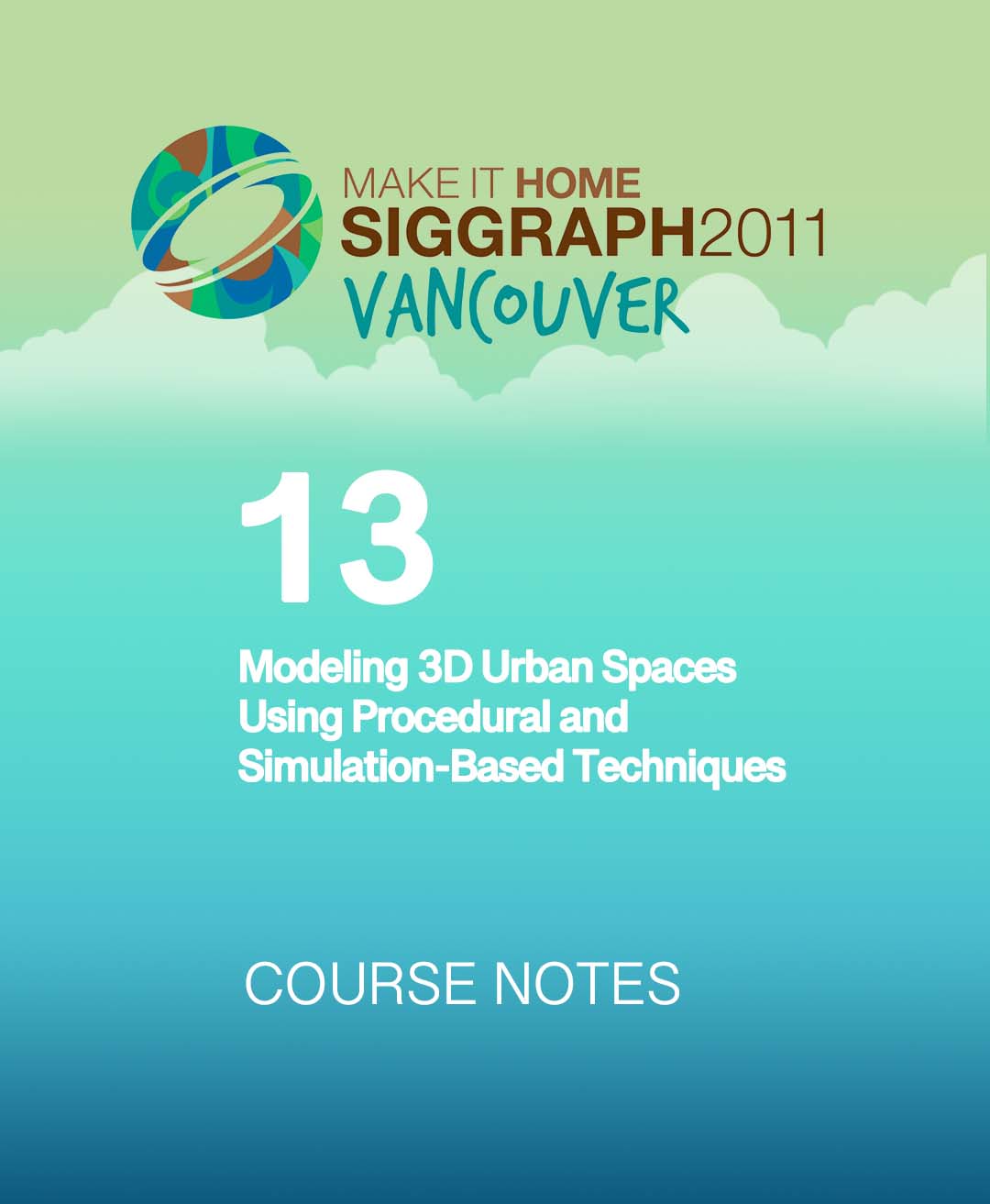“Modeling 3D Urban Spaces Using Procedural and Simulation-Based Techniques” by Wonka, Aliaga, Müller and Vanegas
Conference:
Type(s):
Entry Number: 13
Title:
- Modeling 3D Urban Spaces Using Procedural and Simulation-Based Techniques
Course Organizer(s):
Presenter(s)/Author(s):
Abstract:
Prerequisites
Knowledge of basic computer graphics, such as triangle meshes, hierarchical data structures, texture mapping and ray tracing, and procedural modeling techniques such as particle and L-systems.
Who Should Attend
Users and researchers of computer graphics modeling tools for creating 3D digital content.
Description
This course presents the state-of-the-art in urban modeling, including the modeling of urban layouts, architecture, image-based buildings and façades, and urban simulation and visualization. Digital content creation is a significant challenge in many applications of computer graphics. This course will explain procedural modeling techniques for urban environments as an important complement to traditional modeling software. Attendees of this course will learn procedural techniques to efficiently create highly detailed three-dimensional urban models.
The course is planned as a half-day course, and assumes knowledge of basic computer graphics topics, such as triangle meshes, hierarchical data structures, texture mapping and ray tracing, as well as basic knowledge of procedural modeling techniques such as particle and L-systems. The course will first cover fundamental topics in urban modeling, including urban layouts and road modeling, image-based modeling of facades and buildings, and grammar-based procedural modeling of buildings. Then, it will discuss recent works on simulation-based techniques for urban modeling, planning, and visualization, followed by the use of urban modeling methods in industry.




